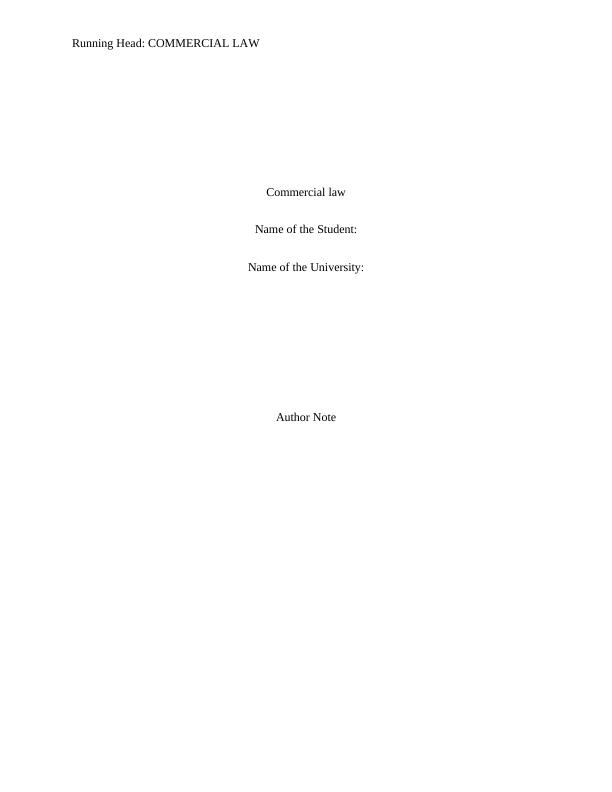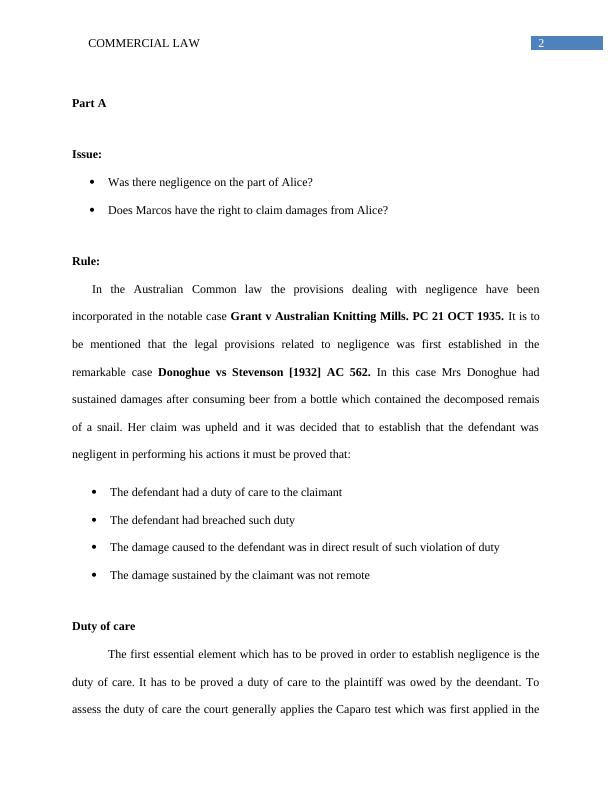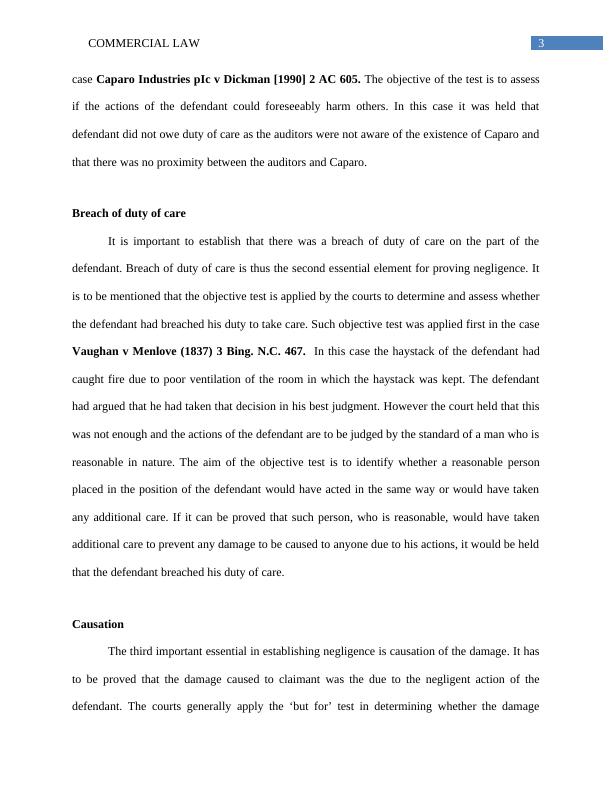COMMERCIAL LAW 10 Running Head: Commercial Law
Added on 2020-05-16
12 Pages2918 Words71 Views
Running Head: COMMERCIAL LAWCommercial lawName of the Student:Name of the University:Author Note

1COMMERCIAL LAWTable of ContentsPart A...............................................................................................................................................2Issue:................................................................................................................................................2Rule:.................................................................................................................................................2Duty of care.....................................................................................................................................3Breach of duty of care......................................................................................................................3Causation.........................................................................................................................................4Remoteness of damage....................................................................................................................4Contributory Negligence.................................................................................................................4Application......................................................................................................................................5Conclusion.......................................................................................................................................8Part B...............................................................................................................................................9a)Ethical approach of Alice in this scenario-...........................................................................9b)Factors and tensions that should have been balanced in this situation.................................9c)Ethical approaches to be utilized by me had I been in Alice’s position...............................9Bibliography..................................................................................................................................11

2COMMERCIAL LAWPart AIssue:Was there negligence on the part of Alice?Does Marcos have the right to claim damages from Alice?Rule:In the Australian Common law the provisions dealing with negligence have beenincorporated in the notable case Grant v Australian Knitting Mills. PC 21 OCT 1935. It is tobe mentioned that the legal provisions related to negligence was first established in theremarkable case Donoghue vs Stevenson [1932] AC 562. In this case Mrs Donoghue hadsustained damages after consuming beer from a bottle which contained the decomposed remaisof a snail. Her claim was upheld and it was decided that to establish that the defendant wasnegligent in performing his actions it must be proved that:The defendant had a duty of care to the claimantThe defendant had breached such dutyThe damage caused to the defendant was in direct result of such violation of duty The damage sustained by the claimant was not remoteDuty of careThe first essential element which has to be proved in order to establish negligence is theduty of care. It has to be proved a duty of care to the plaintiff was owed by the deendant. Toassess the duty of care the court generally applies the Caparo test which was first applied in the

3COMMERCIAL LAWcase Caparo Industries pIc v Dickman [1990] 2 AC 605. The objective of the test is to assessif the actions of the defendant could foreseeably harm others. In this case it was held thatdefendant did not owe duty of care as the auditors were not aware of the existence of Caparo andthat there was no proximity between the auditors and Caparo.Breach of duty of careIt is important to establish that there was a breach of duty of care on the part of thedefendant. Breach of duty of care is thus the second essential element for proving negligence. Itis to be mentioned that the objective test is applied by the courts to determine and assess whetherthe defendant had breached his duty to take care. Such objective test was applied first in the caseVaughan v Menlove (1837) 3 Bing. N.C. 467. In this case the haystack of the defendant hadcaught fire due to poor ventilation of the room in which the haystack was kept. The defendanthad argued that he had taken that decision in his best judgment. However the court held that thiswas not enough and the actions of the defendant are to be judged by the standard of a man who isreasonable in nature. The aim of the objective test is to identify whether a reasonable personplaced in the position of the defendant would have acted in the same way or would have takenany additional care. If it can be proved that such person, who is reasonable, would have takenadditional care to prevent any damage to be caused to anyone due to his actions, it would be heldthat the defendant breached his duty of care. CausationThe third important essential in establishing negligence is causation of the damage. It hasto be proved that the damage caused to claimant was the due to the negligent action of thedefendant. The courts generally apply the ‘but for’ test in determining whether the damage

End of preview
Want to access all the pages? Upload your documents or become a member.
Related Documents
Business Law and Ethics Assignmentlg...
|10
|2107
|88
Assignment on Elements of Negligencelg...
|9
|2059
|84
Commercial Law Issues - Assignmentlg...
|13
|2932
|18
Business Law: Negligence and Recovery of Economic Losslg...
|6
|1050
|191
Commercial Law: Rights to Sue in Tort of Negligence and Australian Consumer Lawlg...
|11
|2902
|193
Commercial Law Issues (Doc)lg...
|11
|2790
|57
